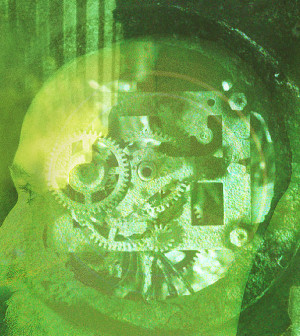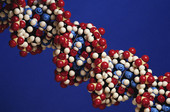- Navigating Your Midlife Crisis: Embracing New Possibilities
- City Raccoons Showing Signs of Domestication
- Mapping the Exposome: Science Broadens Focus to Environmental Disease Triggers
- One Week Less on Social Media Linked to Better Mental Health
- Your Brain Changes in Stages as You Age, Study Finds
- Some Suicide Victims Show No Typical Warning Signs, Study Finds
- ByHeart Formula Faces Lawsuits After Babies Sickened With Botulism
- Switch to Vegan Diet Could Cut Your Greenhouse Gas Emissions in Half
- Regular Bedtime Does Wonders for Blood Pressure
- Dining Alone Could Mean Worse Nutrition for Seniors
Discovery of 100-Plus Genes Tied to Autism May Improve Treatments


More than 100 genes have been identified that appear linked to autism spectrum disorders, two new studies report.
And researchers say they are on their way to discovering up to 1,000 genes overall that may contribute to the disorder.
Autism spectrum disorders include a range of developmental disabilities characterized by communication and social difficulties and repetitive behaviors. An estimated one in 68 U.S. children has an autism spectrum disorder, says the U.S. Centers for Disease Control and Prevention.
Until this research, scientists had identified fewer than a dozen genes apparently linked to autism risk. But these studies increase that number to 33 and add on 74 others that may play a role in autism risk, said Joseph Buxbaum and Silvia De Rubeis, autism specialists at Mount Sinai Hospital in New York City and co-authors of one study.
“The genes that we discovered are shedding light onto the biological processes that might be altered in the brain of the individuals with autism,” Buxbaum and De Rubeis said. These discoveries could lead to tools offering more accurate diagnoses and new directions for therapies, they added.
The findings also reveal how much more research needs to be done, said David Cutler, an assistant professor of genetics at Emory University School of Medicine in Atlanta, and a co-author of the study.
“These findings tell us that there are a relatively large number of genes that, when damaged, substantially increase an individual’s chance of developing autism,” Cutler said. “Autism does not have one cause, but a very, very large number of potential causes.”
He said it has been difficult for researchers to uncover possible genetic and environmental causes of autism primarily because there are so many of them. “It is now beyond doubt that autism is usually caused by the combined effort of many small factors, both genetic and environmental,” he said.
The researchers suspect that small changes in up to 1,000 genes interact to contribute to autism. Some of these changes are inherited while others, including most of the gene mutations identified in this study, occur for the first time when the sperm and egg merge.
“The variants discovered in these papers are very, very rare and occur in a great number of different genes, but each one of them substantially increases an individual’s chance of developing autism,” Cutler said.
The studies used a technique called exome sequencing to look at a portion of individuals’ genetic code to locate genes linked to autism spectrum disorders. The results were published in the Oct. 29 online issue of the journal Nature.
Buxbaum’s team compared the DNA of more than 3,800 autistic individuals with the DNA of more than 9,900 people without autism with a similar ancestry.
More than 5 percent of the study participants with autism had new genetic mutations that affected how well the genes could function. The researchers suspect many of these genes are related to how brain cells communicate with one another.
The other study analyzed DNA from more than 2,500 families that had a child with autism and a sibling without autism.
In that study, the researchers identified two types of gene mutations showing up in kids with autism that neither of their parents had. One type relates to how well proteins function, and the other disrupts the genes.
They estimate that 13 percent of the mutations related to protein function contribute to about 12 percent of the diagnoses of autism. Similarly, almost half the mutations that disrupt genes, they estimate, contribute to 9 percent of diagnoses.
Some of the mutations that disrupt genes are known to be related to intellectual disability and schizophrenia, which caught the attention of Chris Gunter, associate director of research at the Marcus Autism Center within Children’s Healthcare of Atlanta.
“That’s an interesting place for further investigation. If changes to the same gene’s function can produce either of these two quite different conditions, how do we get one versus the other?” she asked. “And how do either of these two gene sets overlap with what we will see when we look at genetic changes in autism which do not break the entire gene, but instead produce subtle shifts in gene function?”
Attempting to answer these questions and identifying more genes linked to autism may lead to new therapy options for autism, the researchers suggested.
Buxbaum and De Rubeis anticipate a “significant fraction of genetic factors” contributing to autism risk will be identified in the coming years. “The genetic discoveries will improve the life of individuals with autism and their families by contributing to more accurate diagnoses, improved genetic counseling and better support and care for patients,” they said.
More information
The U.S. National Institutes of Health has more on autism spectrum disorder.
Source: HealthDay
Copyright © 2025 HealthDay. All rights reserved.










